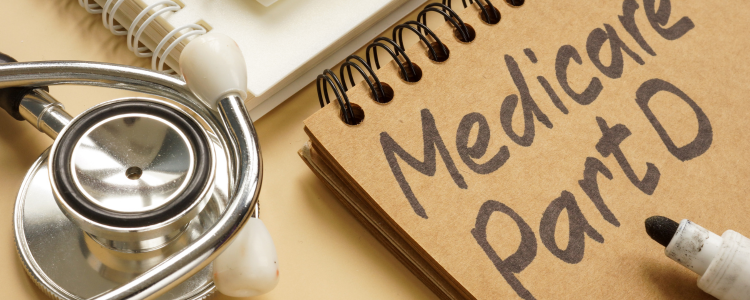What is a Medicare Prescription Payment Plan? A Guide to Managing Out-of-Pocket Costs

Key Takeaways
- The Medicare Prescription Payment Plan will cap annual out-of-pocket costs at $2,000 in the initial coverage phase starting in 2025
- Monthly payment options will be available for out-of-pocket costs
- Insulin costs will be limited to $35 for a 30-day supply
- Additional assistance is available through programs like Extra Help
- Staying informed about changes to Medicare Part D is crucial for optimizing your coverage
In the complex world of healthcare, understanding your options for prescription drug coverage is crucial. The Medicare Prescription Payment Plan offers a new approach to managing medication costs, providing much-needed relief for many beneficiaries. This comprehensive guide will walk you through the ins and outs of this innovative program.
Understanding Medicare Prescription Drug Coverage
Medicare Part D is the foundation of prescription drug coverage for millions of seniors. Here’s what you need to know:
- Original Medicare doesn’t cover most prescription drugs
- Medicare Part D plans help provide coverage for prescriptions
- You can add a stand-alone prescription drug plan (PDP) or choose a Medicare Advantage plan with drug coverage
These options provide flexibility in how you manage your prescription drug expenses, but the landscape is changing with the introduction of the Medicare Prescription Payment Plan.
Choosing the Right Medicare Part D Plan
Selecting the optimal plan requires careful consideration of several factors:
- Assess your prescription drug needs and costs
- Compare coverage and costs across different Part D plans
- Evaluate premiums, deductibles, and copays
- Check the network of pharmacies and providers
- Look for plans with preferred cost-sharing pharmacies
Remember, the right plan for you may change from year to year as your needs evolve and new options become available.
Managing Out-of-Pocket Costs
The Medicare Prescription Payment Plan, set to launch in 2025, aims to revolutionize how beneficiaries handle their out-of-pocket prescription drug costs:
- Caps annual out-of-pocket costs at $2,000 in the initial coverage phase
- Offers the option of monthly payments instead of large upfront costs
- Limits out-of-pocket costs for insulin to $35 for a 30-day supply
These changes, part of the Inflation Reduction Act, promise to make essential medications more affordable and accessible for many Medicare beneficiaries.
Staying Up-to-Date with Medicare Part D Changes
The landscape of Medicare Part D is evolving rapidly:
- Medicare will begin negotiating directly with manufacturers for certain high-cost drugs
- New guidance from CMS outlines implementation details for plan sponsors
- The Biden-Harris Administration is actively working to help beneficiaries manage prescription drug costs
Staying informed about these changes is crucial for maximizing your benefits and minimizing your costs.
Additional Resources and Guidance
For those struggling with prescription drug costs, additional help is available:
- The Extra Help program assists individuals with limited income and resources
- You can apply for Extra Help online or by phone
- Visit Medicare.gov for detailed information on eligibility and the application process
Don’t hesitate to reach out to your plan provider or Medicare directly for personalized assistance.
Next Steps and Support
Taking control of your prescription drug coverage requires action:
- Contact Medicare for more information about the Prescription Payment Plan
- Schedule an appointment to apply for Extra Help if you think you might qualify
- Use online resources to compare plans and understand your options
- Review the model materials provided by CMS to understand how the new plan will work
Ready to take control of your prescription drug costs? Contact NavaQuote today to compare Medicare Part D plans and ask any questions you have about the upcoming Medicare Prescription Payment Plan availability. Our expert team can help you navigate your options and find the perfect coverage for your needs. Don’t let rising medication costs impact your health or financial well-being – secure your future with NavaQuote’s help now!
FAQs
What does the Medicare prescription payment plan do?
The Medicare Prescription Payment Plan caps annual out-of-pocket prescription drug costs at $2,000 during the initial coverage phase and allows beneficiaries to pay these costs in monthly installments rather than all at once at the pharmacy.
What is the Medicare prescription drug coverage plan called?
The Medicare prescription drug coverage plan is officially called Medicare Part D.
Are Medicare drug plans worth it?
Medicare drug plans are often worth it, especially for those who take multiple medications or expensive drugs. They can significantly reduce out-of-pocket costs and provide protection against high drug prices.
Who is the most likely to benefit from the Medicare prescription payment plan?
Those most likely to benefit include beneficiaries with high prescription drug costs, individuals on fixed incomes, and those who struggle with large upfront pharmacy payments. It’s particularly beneficial for people with chronic conditions requiring ongoing medications.
*Disclaimer: This page has not been reviewed or endorsed by Medicare.gov or any member of the Centers for Medicare & Medicaid Services (CMS).